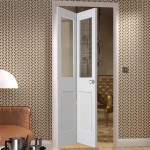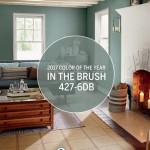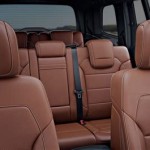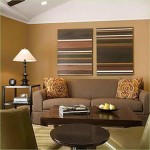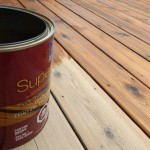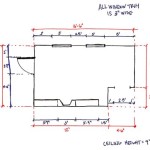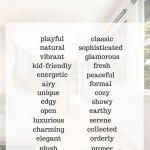What is Mid-Century Interior Design Style?
Mid-Century Modern interior design, often abbreviated as MCM, is a significant movement that emerged in the mid-20th century, roughly from the 1930s to the 1960s. It's more than just a style; it represents a shift in societal values, technological advancements, and artistic expression. Understanding its core tenets allows one to effectively incorporate its principles into a modern living space.
This design aesthetic is characterized by clean lines, organic shapes, a focus on functionality, and a celebration of natural materials. It eschews excessive ornamentation in favor of simplicity and practicality. The style developed as a response to the post-World War II era, a time of optimism, innovation, and a desire for modern living. As such, it embraced new materials like plastic, fiberglass, and plywood alongside traditional materials like wood, glass, and metal.
The roots of Mid-Century Modern can be traced to the Bauhaus movement in Germany and the International Style, which emphasized functionalism and minimalist design. When European designers and architects emigrated to America, they brought these principles with them, adapting them to the American context.
Key influences on the style include the work of renowned architects and designers such as Charles and Ray Eames, George Nelson, Eero Saarinen, and Arne Jacobsen. Their furniture designs, characterized by innovative shapes and materials, became iconic representations of the era. These designers sought to create furniture that was both aesthetically pleasing and accessible to the average consumer, aligning with the democratic ideals of the time.
The emphasis on functionality in Mid-Century Modern resulted in furniture pieces that were designed with purpose and ergonomics in mind. Multi-functional items, such as convertible sofas and modular storage units, were popular choices for smaller homes and apartments. The style's inherent adaptability allowed it to seamlessly integrate into various architectural settings, from suburban ranch houses to urban penthouses.
Key Point 1: Emphasis on Clean Lines and Organic Forms
A defining characteristic of Mid-Century Modern interior design is its emphasis on clean, simple lines. Ornamentation is kept to a minimum, with a focus on showcasing the beauty of the materials used and the overall form of the furniture and architectural elements. Straight lines, geometric shapes, and gentle curves are often combined to create a balanced and visually appealing aesthetic.
Organic forms, inspired by nature, are another crucial element. This is evident in the use of rounded edges, curved backs, and sculptural shapes in furniture design. Designers sought to emulate the fluidity and harmony found in the natural world, bringing a sense of warmth and softness to the otherwise minimalist aesthetic.
Consider the iconic Eames Lounge Chair and Ottoman. Its molded plywood shell and supple leather upholstery exemplify the fusion of clean lines and organic forms. The chair's curved silhouette provides ergonomic support, while its simple construction emphasizes the beauty of the materials. This piece is a testament to the Mid-Century Modern principle of blending form and function.
In architecture, this principle translates to open floor plans, large windows that blur the boundaries between indoor and outdoor spaces, and the use of natural wood and stone. Homes were designed to be integrated with their surroundings, maximizing natural light and creating a sense of connection to nature.
The lack of clutter is also crucial in maintaining the clean lines and organic forms that define the style. Accessories are carefully chosen and strategically placed to complement the overall design, rather than overwhelming it. A few well-placed pieces of art, a striking floor lamp, or a collection of decorative objects can add personality and visual interest without compromising the minimalist aesthetic.
Key Point 2: Use of Natural and Man-Made Materials
Mid-Century Modern design embraces a diverse range of materials, both natural and man-made. Wood is a dominant element, often used for furniture frames, wall paneling, and flooring. Teak, walnut, and oak are particularly popular choices, valued for their rich color and durability. The natural grain of the wood is often celebrated, adding warmth and texture to the interiors.
In addition to wood, glass is extensively used, especially in large windows and sliding doors that connect the interior spaces to the outdoors. Glass allows natural light to flood the rooms, creating a bright and airy atmosphere. It also provides unobstructed views of the surrounding landscape, further blurring the lines between indoor and outdoor living.
The style also embraced new materials that were developed during the mid-20th century, such as plastic, fiberglass, and plywood. These materials allowed designers to create furniture with innovative shapes and forms that were previously impossible. The Eames molded plastic chairs, for instance, demonstrated the potential of these materials to create durable, affordable, and aesthetically pleasing furniture.
Metal is another important material used in Mid-Century Modern design. It is often used for furniture legs, lighting fixtures, and decorative accents. Chrome, brass, and steel are common choices, adding a touch of industrial chic to the interiors. The clean lines and polished surfaces of metal complement the minimalist aesthetic of the style.
The juxtaposition of natural and man-made materials is a hallmark of Mid-Century Modern design. The combination of warm wood tones with the cool, sleek surfaces of metal and glass creates a balanced and visually interesting aesthetic. This material palette reflects the era's optimism and embrace of both tradition and innovation.
Key Point 3: Functionality and Practicality
Functionality is a cornerstone of Mid-Century Modern design. Every element, from furniture to architectural features, is designed with a specific purpose in mind. The emphasis is on creating spaces that are not only aesthetically pleasing but also practical and comfortable to live in.
Furniture is designed to be both stylish and ergonomic. Chairs and sofas are often designed with curved backs and ample cushioning to provide optimal support. Modular storage units and multi-functional furniture are popular choices, allowing homeowners to maximize space and adapt their living areas to their changing needs.
Open floor plans are another key feature of Mid-Century Modern design. These layouts create a sense of spaciousness and allow for easy flow between different areas of the home. The kitchen, dining area, and living room are often combined into a single, interconnected space, promoting social interaction and a sense of community.
Storage solutions are also carefully considered. Built-in cabinets, shelving units, and concealed storage compartments are used to minimize clutter and keep the living spaces organized. The goal is to create a clean and uncluttered environment that promotes relaxation and productivity.
The focus on functionality extends to the selection of accessories and decorative objects. Items are chosen not only for their aesthetic appeal but also for their usefulness. Lamps provide task lighting, rugs add warmth and texture, and artwork enhances the overall ambiance. Every element is carefully considered to contribute to the functionality and comfort of the space.
The style's commitment to functionality ensured its enduring appeal. By prioritizing practicality and comfort, Mid-Century Modern design created spaces that were not only beautiful but also highly livable. This emphasis on functionality continues to resonate with modern homeowners who seek a balance between style and practicality.
In conclusion, Mid-Century Modern interior design is a distinctive style characterized by clean lines, organic forms, the use of both natural and man-made materials, and a strong emphasis on functionality. Its enduring appeal lies in its ability to create spaces that are both aesthetically pleasing and practical, reflecting the optimism and innovation of the mid-20th century.

What Is Mid Century Style In Interior Design Inspiration Books Blog

Midcentury Modern Style 101

Mid Century Interior Design 7 Tips For Creating A Timeless Modern Home Decorilla

Mid Century Modern Interior Design 6 Features And Stunning Ideas

Mid Century Interior Design 7 Tips For Creating A Timeless Modern Home Decorilla
What Is Mid Century Modern The Popular Design Style Explained

5 Features Of Mid Century Modern Interior Design Windermere Real Estate

Mid Century Interior Design 7 Tips For Creating A Timeless Modern Home Decorilla

Mid Century Modern Interior Style Urvission Interiors

Mid Century Modern Design Defined How To Master It Décor Aid
Related Posts

